“Fall back, Spring forward”. Isn’t that what they say about daylight savings time? Or more commonly, isn’t it best known as “that time change thing where you either lose or gain an hour of sleep”? Ok ok, we hear that. And while we know you’d rather lounge in bed for that extra hour of shuteye, there are some upsides to that dreaded clock switch. Curious to know what these positive side effects are? Keep reading to find out everything you’ve always wanted to know about Daylight Savings Time.
When did Daylight Savings Time even begin?
Well, 1908 to be exact. And while most people believe that Germany and Austria began turning their clock backs in 1916, the truth is that a little Canadian town named Thunder Bay sorta beat them to it.
Back in the German Empire of 1916 though, turning the clock ahead by an hour quickly became commonplace. The idea behind it was to save fuel for their war efforts, by minimizing their use of artificial lighting.
Now that we have that quick Daylight Savings Time history lesson out of the way, let’s keep it moving.

What’s the point of Daylight Savings Time disrupting my sleep schedule?
Much like back in the day, we still practice Daylight Savings Time today to conserve energy. And, to extend the amount of sunlight we get exposed to during our days. Of course something can be said for the fact that well, we have been doing this for years. But in reality, there are totally plausible reasons for why we still engage in Daylight Savings Time aside from tradition.
Sunlight? I don’t need any more sunlight, I just want to sleep! Girl, no! Wake up! We all need more sunlight in our lives. In fact, let’s break down the benefits of Daylight Savings Time even further.
Enjoy the extra hour of sunlight in the evening, thanks to Daylight Savings Time!

The winter months can be a total drag for a multitude of reasons. Especially if you live in a colder climate. Not only are you forced to cover up your best outfits with a massive winter parka to survive. But you’re also stuck with days shorter than Danny DeVito.
Let's paint a picture here. You wake up, and it’s dark. You leave the office, it’s dark. And then you get home, and it’s even darker. Basically, your days feel dead and gone before you know it due to the lack of sunlight you’re exposed to. Those are simple facts sis!
By setting our clocks back, we get to feel like our days are a little extended. And that is a huge mood booster. What’s more, that extra bit of sun is known to provide you with the energy boost you need after a day’s work to get some chores done. Or better yet, to leave the couch for once and go have cocktails with the girls sans pajamas.
Daylight Savings Time helps save the planet and your energy bill.

By now, you’ve heard us encourage you to use less energy. Or, you've read our many tips on how to opt for energy efficient lighting whenever you can. From the lights on your Christmas tree, to how to have an eco-friendly Thanksgiving. We have always mentioned how important it is to conserve energy!
Therefore, it comes as no surprise that another reason why we can get behind Daylight Savings Time is that it makes a significant difference in overall energy consumption. The American Council for an Energy-Efficient Economy even tells us that energy efficiency is beneficial for the air you breathe, and the water you drink. That’s because conserving energy has a direct impact on air and water pollution.
So while we hate to miss out on any amount of sleep, we’ll take one for the team (a.k.a. the planet) on this one.
Make losing an hour of sleep as seamless as possible with these Daylight Savings Time tips.
We know that sounds like the biggest oxymoron ever. However, you can make your new sleep schedule transition easy peasy with the help of these simple tips below. Losing an hour of sleep doesn’t have to make everyone around you scared, we promise.

Go to bed a little early leading up to Daylight Savings Time.
The week leading up to the time change, go to bed a little earlier. This will give your body some time to get adjusted. You’ll feel more rested, and be less affected by the hour you’ll soon be officially losing.
For example, if you go to bed at 11:00 p.m., try to at least cozy up under the sheets around 10:30 p.m. instead. It may seem like a minimal change, but it will make a big difference when the clock rolls back.
If you have trouble sticking to a sleep schedule that works for you, we feel that. Around here, we are big proponents of having a nighttime routine that allows you to sneak in some time for self-care, and that helps you wind down for some real rest.
This could include reading a book, taking a bath an hour before your intended sleep time, or completing a relaxing skincare ritual. Additionally, we totally recommend turning off all of your devices an hour before you hit the hay. This will ensure that you are shutting off any noise that may disrupt your precious beauty sleep, and allow you to disconnect and quiet your mind.
Avoid alcohol and caffeine before you try to catch some ZzZ’s.
This is definitely an all-year round kind of tip, but we’ll mention it here because it will help you in tremendous ways when you’re trying to adjust to a new sleep schedule.
While you may think that glass of Pinot before bed helps you get to sleep quick, it actually isn’t beneficial to your overall sleep quality. That’s because alcohol then metabolizes in your body while you’re sleeping, and consequently causes sleep disruptions. Not to mention, any kind of alcohol contributes to dehydration. Which means you’ll likely be waking up during the night to drink water. Or, you’ll simply wake up the next morning feeling parched. Not so cute, and not so ready to conquer the day.
As for our beloved cup of Joe, experts say it is best to cut off caffeine consumption at least 6 hours before you plan to go to sleep. This includes soda, caffeinated tea, and any other beverage that runs the risk of keeping you wired when you’re trying your hardest to get some shuteye.

Reset all of the clocks.
The time on your smartphone adjusts all on its own – we know. But to avoid feeling confused and questioning what planet you just woke up on, switch the time on the clocks all over your house the night before the time goes back. Don’t forget the time on your appliances, in your car, and wherever else you usually glance at the clock before you run out the door.
Last but not least, start your day off right with some sunlight.
When that clock goes back, take advantage of the fact that you’ll likely finally be waking up to actual sunlight in the morning.
That means opening up those blinds, and letting some sun shine through those windows babe! Waking up to sunlight is again, an instant mood booster. It can totally give you that jolt of joy that you often need to spring out of bed.
If your room doesn’t get that much sun exposure, don’t sweat it. Head to the sunniest spot in your home. Try to make it a point to just take in some daylight while you sip that espresso first thing in the morning. It’s grounding, it’s healthy, and it will make you glad that we have that *somewhat annoying* thing called Daylight Savings Time.
Until next time, keep shining gorgeous.
What are your thoughts on Daylight Savings Time? How do you and your family prep for it? We need all of the tips and tricks when it comes to protecting our precious ZzZ’s, baby. We hope your transition to a new sleep schedule isn’t too painful. What's more, we also hope that you can learn to see some of the goodness that we see in this age-old tradition. Stay bright, babe <3.
Carey
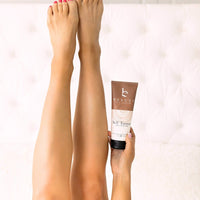










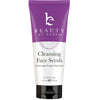














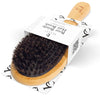
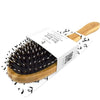
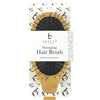

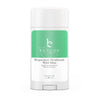




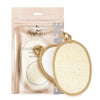








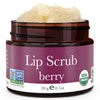
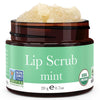
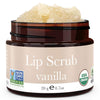





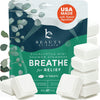




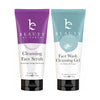


















join the conversation